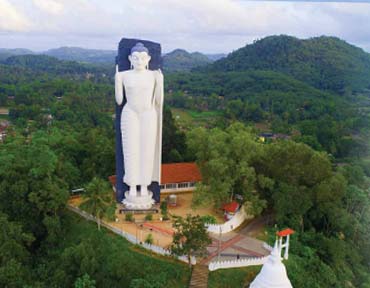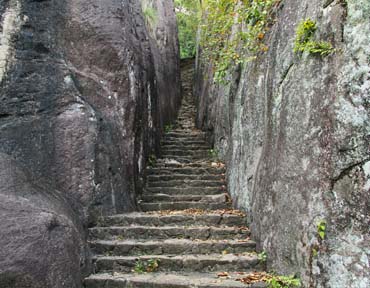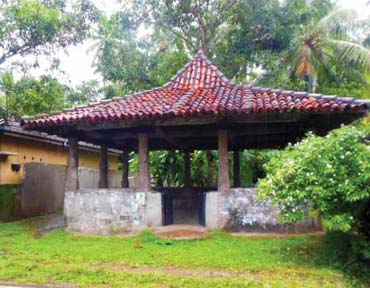


Colombo Lighthouse was operated and maintained by the Sri Lanka Ports Authority. It is located at Galbokka Point south of the Port of Colombo on the waterfront along the marine drive, in Colombo fort. The current 29-metre-high (95 ft) lighthouse was built in 1952 after the Old Colombo Lighthouse was deactivated when its light became obscured by nearby buildings as part of the Colombo Harbor Expansion project. It was opened by Rt Hon D.S. Senanayake, the first prime minister of Ceylon. Built on a concrete base which is 12 m (39 ft) high, it has four statues of lions at its base

A replica of the Aukana Buddha, considered the tallest standing Buddha statue in Asia is found at the Batamulla Kanda temple. The statue is 135 feet in height.

Maligatenna Raja Maha Vihara is an ancient Cave temple which is located in Malwatuhiripitiya village. The temple is located on the Gampaha - Wathurugama Road and approximately 1.6 km (0.99 mi) away from the ancient temple Pilikuththuwa Raja Maha Vihara. The history of Maligathenna Raja Maha Vihara is believed to be goes back to the time period of Anuradhapura Kingdom. According to Brahmi cave inscriptions found in Warana Raja Maha Vihara and Pilikutthuwa Raja Maha Vihara, those are temples located near to Maligatenna, it can be assumed that this vihara may also have been on abode of Buddhist monks

Ambagaspitiya Ambalama is a 18th century wayside rest built on granite pillars in Mahara Divisional Secretariat. The ambalama is situated on the Yakkala-Radawana road, 4.7 km from Yakkala. The ambalama is built with 12 granite pillars with a design similar to the Gallindawatta Ambalama few kilometers away. A half height brick and mortar wall goes around the ambalama with a entrance on the northern side. The granite pillars are decorated with various carvings. The stone pillars have peculiar carvings depicting the scenes of Ramayana such as the Hanuman with the chunk of earth with medicinal plants, which are all rare themes in Sri Lanka. The pillar top (pekada) is made of wood and is exquisitely carved. The roof is the typical kandyan style (doubled pitched hipped roof) and tiled with semi cylindrical barrel clay tiles (sinhala ulu)